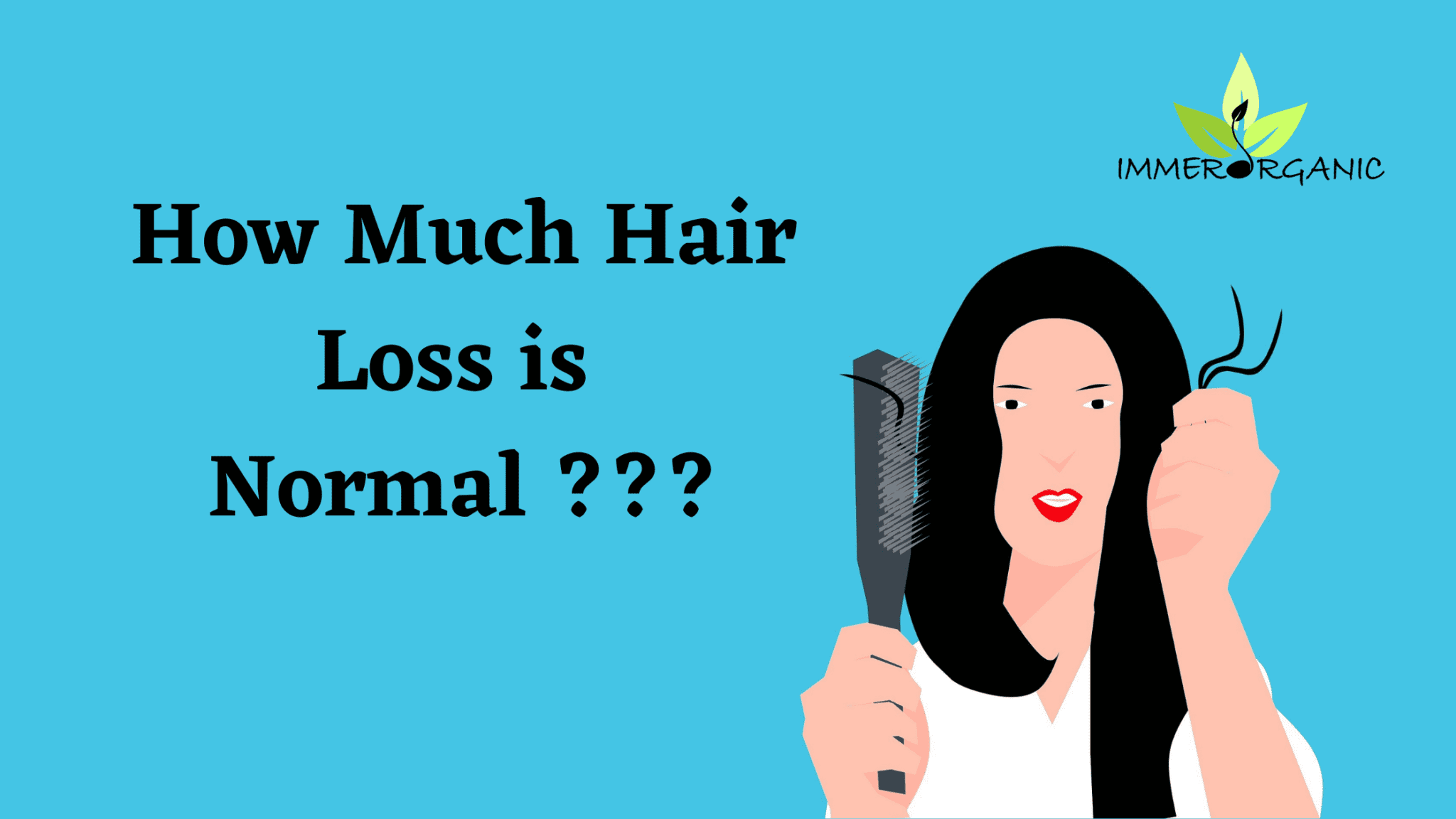Table Of Content

If they suspect an autoimmune or skin condition, they might take a biopsy of the skin on your scalp. This involves carefully removing several small sections of skin for laboratory testing. They’ll likely use a combination of your health history — including any recent illnesses, surgeries, life stressors, and family history — and a physical exam to help narrow down the causes.

How Stress Can Affect Hair Loss And What To Do About It
Washing the hair also collects many of the hairs that have already detached from the head. Dieting can lead to malnourishment as you do not get the necessary vitamins and minerals, leading to poor health. But, if you are losing more than usual, that may mean all is not well with your hair. You may think you are losing too much hair, but you could be wrong. Send your Q to for a chance to have it featured in a future installment of Hair Health Hotline.

Addressing shortfalls through diet and supplements: Does it help hair growth?
Correcting the underlying problem is often all that’s needed to help stop hair loss. Stopping hair loss indefinitely depends upon the underlying cause. As a general rule, the sooner you treat hair loss, the more likely you will be able to reverse or reduce the rate of hair loss. Some research connects excess intake of vitamin A or selenium with an increased risks for hair loss. Any information you can provide about how quickly the hair loss occurred, along with any family history of baldness, will also be helpful. Hair transplant surgery involves moving small plugs of skin, each with a few hairs, to bald parts of your scalp.
Medical Professionals
An Old Medicine Grows New Hair for Pennies a Day, Doctors Say (Published 2022) - The New York Times
An Old Medicine Grows New Hair for Pennies a Day, Doctors Say (Published .
Posted: Thu, 18 Aug 2022 07:00:00 GMT [source]
On the whole, it’s important that you speak with your doctor about any symptoms you’re experiencing. A dermatologist can provide a proper diagnosis, and select a personalized treatment that will help restore health to you hair and scalp. Alopecia areata is an autoimmune condition that is characterized by “round patches of hair loss on the scalp,” although it can occur elsewhere on the body, Agbai says. While the exact reason for this type of hair loss is unknown, it is generally understood that “the immune system mistakenly attacks hair follicles, leading to hair loss,” she adds. Another test that you can try to determine how much hair loss you’re experiencing is the 60-second hair count.
Telogen effluvium is a type of sudden hair loss that results from emotional or physical shock, like a traumatic event, period of extreme stress, or a serious illness. It’s also the most common cause of hair loss, affecting up to 50% of people. The main symptom of alopecia is losing more hair than usual, but this can be harder to identify than you might think. Genetics plays a huge role in determining a person’s hair thickness over time. In fact, alopecia is often hereditary in both men and women, Dr. Rajagopal says. Have you started on a new med lately and you're shedding more hair?
Ask a Beauty Editor: What Is the Difference Between Hair Loss, Hair Thinning, and Hair Breakage? - Real Simple
Ask a Beauty Editor: What Is the Difference Between Hair Loss, Hair Thinning, and Hair Breakage?.
Posted: Wed, 02 Nov 2022 07:00:00 GMT [source]
For conditions like alopecia areata that may affect children as well as adults, groups can provide emotional support and even help you buy wigs or find other ways to cope. When you start to shed more strands — and fewer or none grow back — the condition is considered alopecia (hair loss). There are several types of hair loss, and it can affect adults of any gender and even children. You may lose hair just on your head or from your body as well. Male pattern baldness typically involves progressive hair loss above the temples and thinning at the crown of the head, creating an “M” shape. The normal amount of hair you lose daily shouldn't change rapidly—and it's important to differentiate between running your hands through your hair and pulling on your strands, notes Kingsley.
Of course, if you're losing more, it could be a sign that something else is going on, from nutritional deficiencies or an underlying disease to tough-on-your-scalp styles. “Give your doctor a full hair history — when the thinning began, where and how extensive the thinning is, and any relevant symptoms,” she says. But consult your doctor before you start to worry; thinning hair is often reversible, Dr. Simpson says. Many people who style their hair using a hairbrush may worry when they see all the leftover hairs in the brush. Let’s say you had COVID or some other illness, you can expect your hair to come out after a few weeks.
What causes hair loss?
Since strands are most susceptible to breakage when they are wet—curls and coils are the most delicate, due to their lower elasticity—be gentle during the detangling process, Dr. Howard-Verovic explains. Consider using the Pattern Beauty Shower Brush ($17, ulta.com) and take a careful approach. According to the American Academy of Dermatology, a typical loss is 50 to 100 strands per day.
Ahead, dermatologists explain hair loss causes, prevention, and treatments. Excess hair shedding lasting longer than 2 to 4 weeks requires medical attention, says Kingsley. There are a few instances when we notice hair shedding most, the first being when we brush our hair. The more often you brush (and shampoo) your hair, the less strands you should see fall out each time, says Kingsley. So, if you lose 45 strands per day on average, but also brush every day, you should see a smaller, consistent number in the bristles; you'll see the bulk of normal shedding in the shower.
If you are losing more than 15 hairs per pull, it likely means more than 10 percent of the hair on your head is in the ‘resting’ phase. It can be alarming to look at your comb or the shower drain cover and see a clump of hair. Not only could it clog your pipes, it can cause you to worry that it’s a sign of serious hair loss. But chances are what you’re seeing isn’t anything to be concerned about—and if you want to be sure, there are easy ways to check for abnormal hair loss without visiting a doctor.
Ultimately, tracking a pattern of hair loss that deviates from your baseline, as opposed to monitoring a numerical amount, is a better indicator of a problem, notes Dr. McMichael. Most baldness is caused by genetics (male-pattern baldness and female-pattern baldness). This usually isn't noticeable because new hair is growing in at the same time.
Excessive washing, bleaching, brushing, and heat styling can also have an impact on how much of your hair falls out every day. Once your hair follicle has been stretched or split as a result of a cosmetic hair treatment, the structure of the hair follicle is compromised. There are hundreds of thousands of hairs on your head, and every single one them is at a different stage of its two- to five-year lifespan. Hair grows and dies in phases, and nutrition, stress, hygiene, and daily styling all play a role in how much hair you lose daily.
Polycystic ovary syndrome (PCOS), thyroid disease and certain autoimmune conditions, such as alopecia areata and lupus, can all cause hair loss. It's likely that everyone will experience telogen effluvium at some point in their lives, says Dr. Kuhn, but the good news is that this is not permanent and your hair will come back completely over six to 12 months. A stressful event or acute illness may cause a person to shed more hair than normal.
A doctor will be able to assess whether your hair loss is normal shedding. There’s no way to measure the difference objectively, because daily heat styling and frequent hair coloring plays a big part in how much of your hair sheds. Approximately 40 percent of women lose extra hair every day because of the way they style it. Women are also more likely than men to experience periods of increased hair shedding due to life events like pregnancy and menopause. If you experience an uptick in your daily hair fall, it's important to pay attention to how long it lasts, and whether you can pinpoint an event that may have triggered temporary increased hair loss. "There's probably something internal going on or maybe it's the beginning of hair thinning."

No comments:
Post a Comment